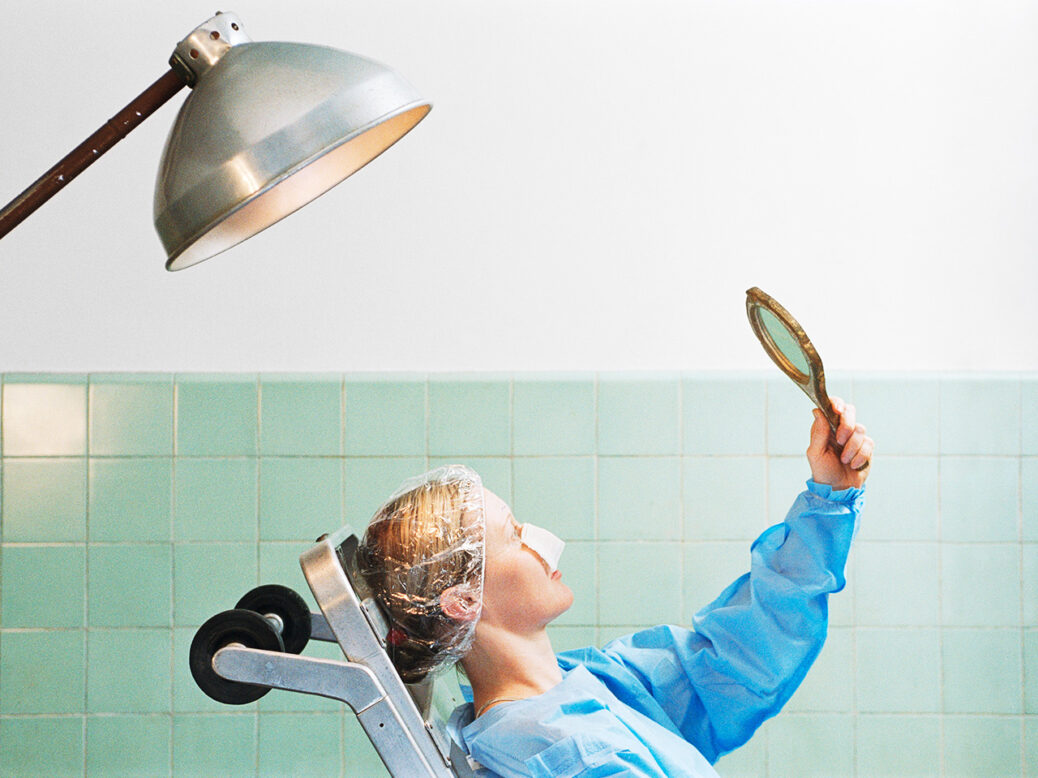
In the last two years a steady stream of tabloid articles, YouTube videos and viral Instagram posts have appeared telling versions of the same story: a celebrity or influencer undoing a major cosmetic procedure. Perhaps it’s one they’ve had for years, perhaps even a feature that they are famous for: Molly-Mae Hague dissolving her cheek and lip fillers, for example, or Cardi B getting her butt implants removed. These “explant” procedures became a trend in themselves, marking the end of the Brazilian butt lifts and plumped faces that defined the 2010s in favour of a more natural look.
Many have characterised this as a positive trend. The public figures undoing their past procedures have experienced an outpouring of praise, not only for their bravery and transparency, but often for “setting a good example” for their typically young, female audiences. Others warn that these changes – a dip in the popularity of face-distorting fillers, more realistic bodies on display – are merely a brief midpoint in a swing of the cultural pendulum towards an equally unattainable set of body ideals.
Fashion and beauty media are heralding a revival of Y2K aesthetics: all flat stomachs, gaunt faces, brows so high they reach your hairline. Much has been written about the booming popularity of buccal fat removal and the possible return of “heroin chic”. But while a return to the rigid, unachievable body types of that decade would be worrying, the truth is we’re not going back to the Noughties but somewhere far worse.
[See also: Coco Chanel’s second coming]
In the last two decades cosmetic surgery has been normalised for the average person. Alongside the drive for a Kim Kardashian aesthetic there has been a dramatic spike in the number of people getting cosmetic procedures, be it filler or preventative Botox, implants or a butt lift. Our culture is not only accepting of this choice but often uses a watered-down, commercialised strain of feminism to brand it “empowering”. The insidiousness of the cosmetic surgery industry is under-scrutinised as a result.
Now we are witnessing a major shift in mainstream body aesthetics at the same time that surgery and “tweakments” have been popularised. People, mainly women, who have had extensive surgery have largely done so to fit a particular hourglass body type. So what happens now if body trends really are moving in a new, nearly opposite direction? What does more nipping and tucking do to our bodies?
The most popular procedures of the 2010s are often difficult to undo and those seeking to switch from a curvy physique to a skeletal one are paying expensive rates and taking major risks to do so. Dr Paul Banwell, a prominent plastic surgeon in the south of England with a practice on Harley Street, London, said that alongside a rise in requests for treatments such as buccal fat removal, and a drop in requests for surgeries such as butt lifts, he has also had more requests for reversals of past cosmetic work. “These were not something we commonly needed to perform previously,” he says. “This has changed recently as many patients now actually know it is possible, so some play around with different looks as a ‘fashion’.” He emphasised that a reversal of a butt lift, in particular, is challenging to achieve. Dr Elizabeth Hawkes, a consultant oculoplastic surgeon, says that when it comes to extreme eye lifts (an aesthetic popularised by models such as Bella Hadid), “while it is technically possible to reverse surgery around the eyes, this is difficult to perform and very challenging”.
The issue isn’t just that a mass undoing and subsequent redoing of cosmetic surgery is underway, but that another dramatic shift in the ideal, fashionable body type will inevitably soon arrive. When it does, people could be undergoing their third round of trend-chasing procedures, even with the risks that come with doing so. We may be left with a generation constantly cutting away at their own bodies.
Narrow beauty standards have always had a negative impact on our self-worth and have driven millions of people to dangerous lengths, even before the rise of surgery. The danger now is that our bodies will be treated like fast fashion – our features altered and cast off to fit every passing trend, at great physical and emotional cost.
[See also: Is TikTok “bombarding” teenage users with harmful content?]






